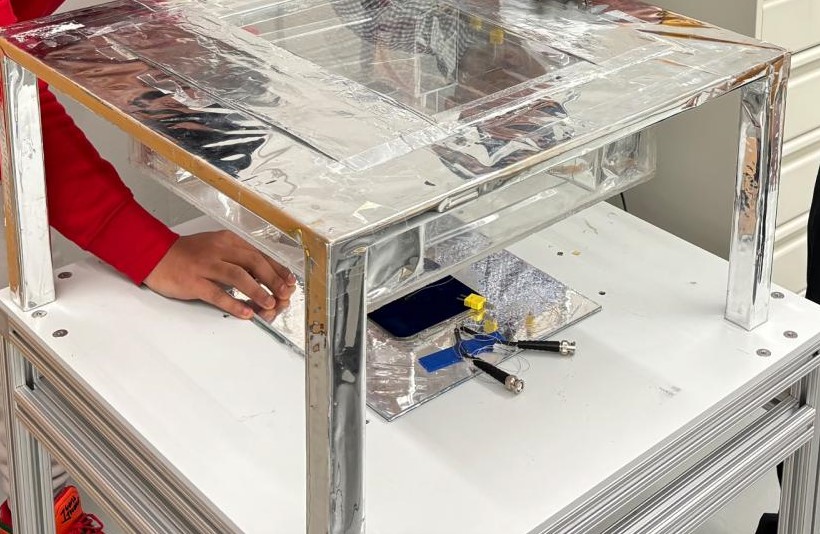
The Potential of a Hybrid Energy System for Sustainable Development

Introduction
The researchers at Penn State University in the United States have developed a prototype of a hybrid energy system that combines solar cells for power production and radiative cooling for external cooling purposes. This innovative system aligns with the Sustainable Development Goals (SDGs) by promoting renewable energy and energy efficiency.
Key Findings
- The hybrid system has a cooling power of 63.8 W/m2 and a photovoltaic power output of 159.9 W/m2.
- The cooling capacity provided by the system can be used in buildings or refrigerators, contributing to SDG 7: Affordable and Clean Energy.
- The system achieves simultaneous subambient daytime radiative cooling and photovoltaic electricity generation from the same area, promoting SDG 13: Climate Action.
- The researchers demonstrated a temperature reduction of 5.1°C under solar irradiance of about 1,000 W/m2, showcasing the potential for energy savings and efficiency (SDG 12: Responsible Consumption and Production).
- The hybrid system’s cooling power is five times greater than conventional solar-reflective radiative coolers, highlighting its potential impact on energy conservation (SDG 7: Affordable and Clean Energy).
Methodology and Results
The system consists of a transparent low-iron glass radiative cooler, a visibly transparent infrared-opaque layer, and a 125 mm × 125 mm interdigitated back-contact (IBC) photovoltaic cell. The researchers tested the system in an outdoor environment and achieved significant cooling power and electricity generation.
Conclusion
This hybrid energy system demonstrates the potential of harnessing both solar energy and radiative cooling for renewable energy production and efficient cooling. By integrating these technologies, the system contributes to multiple SDGs, including SDG 7: Affordable and Clean Energy, SDG 12: Responsible Consumption and Production, and SDG 13: Climate Action. Further research and development in this field can lead to sustainable solutions for energy generation and conservation.
SDGs, Targets, and Indicators Analysis
1. Which SDGs are addressed or connected to the issues highlighted in the article?
- SDG 7: Affordable and Clean Energy
- SDG 9: Industry, Innovation, and Infrastructure
- SDG 11: Sustainable Cities and Communities
- SDG 13: Climate Action
The article discusses a hybrid energy system that integrates solar cells for power production and radiative cooling for external cooling purposes. This addresses the goals of affordable and clean energy (SDG 7), industry, innovation, and infrastructure (SDG 9), sustainable cities and communities (SDG 11), and climate action (SDG 13).
2. What specific targets under those SDGs can be identified based on the article’s content?
- SDG 7.2: Increase substantially the share of renewable energy in the global energy mix.
- SDG 9.4: Upgrade infrastructure and retrofit industries to make them sustainable, with increased resource-use efficiency and greater adoption of clean and environmentally sound technologies and industrial processes.
- SDG 11.6: Reduce the adverse per capita environmental impact of cities, including by paying special attention to air quality and municipal and other waste management.
- SDG 13.2: Integrate climate change measures into national policies, strategies, and planning.
Based on the article’s content, the specific targets under the identified SDGs include increasing the share of renewable energy in the global energy mix (SDG 7.2), upgrading infrastructure and industries to make them sustainable (SDG 9.4), reducing the adverse environmental impact of cities (SDG 11.6), and integrating climate change measures into national policies and planning (SDG 13.2).
3. Are there any indicators mentioned or implied in the article that can be used to measure progress towards the identified targets?
- Photovoltaic power output (W/m2)
- Cooling power (W/m2)
- Temperature reduction (°C)
- Solar irradiance (W/m2)
The article mentions several indicators that can be used to measure progress towards the identified targets. These indicators include photovoltaic power output, cooling power, temperature reduction, and solar irradiance.
Table: SDGs, Targets, and Indicators
| SDGs | Targets | Indicators |
|---|---|---|
| SDG 7: Affordable and Clean Energy | Increase substantially the share of renewable energy in the global energy mix (SDG 7.2) | Photovoltaic power output (W/m2) |
| SDG 9: Industry, Innovation, and Infrastructure | Upgrade infrastructure and retrofit industries to make them sustainable, with increased resource-use efficiency and greater adoption of clean and environmentally sound technologies and industrial processes (SDG 9.4) | Cooling power (W/m2) |
| SDG 11: Sustainable Cities and Communities | Reduce the adverse per capita environmental impact of cities, including by paying special attention to air quality and municipal and other waste management (SDG 11.6) | Temperature reduction (°C) |
| SDG 13: Climate Action | Integrate climate change measures into national policies, strategies, and planning (SDG 13.2) | Solar irradiance (W/m2) |
Behold! This splendid article springs forth from the wellspring of knowledge, shaped by a wondrous proprietary AI technology that delved into a vast ocean of data, illuminating the path towards the Sustainable Development Goals. Remember that all rights are reserved by SDG Investors LLC, empowering us to champion progress together.
Source: pv-magazine.com

Join us, as fellow seekers of change, on a transformative journey at https://sdgtalks.ai/welcome, where you can become a member and actively contribute to shaping a brighter future.






